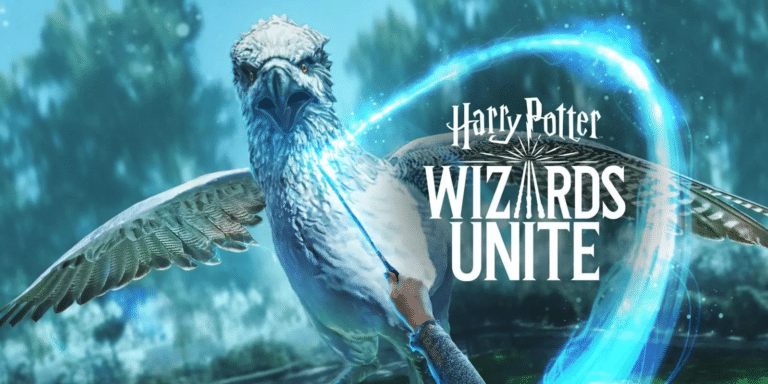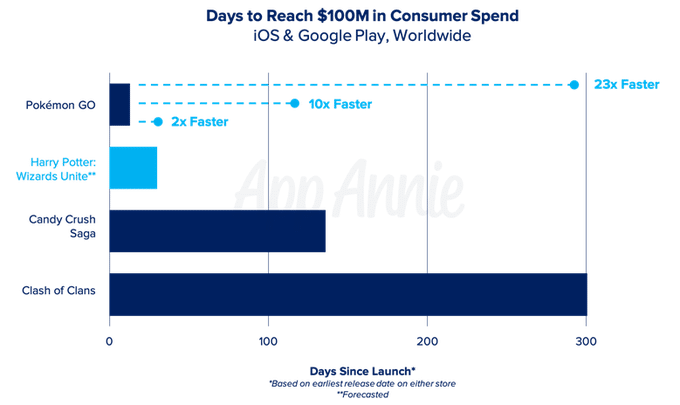
Data Point of the Week is AR Insider’s dive into the latest spatial computing figures. It includes data points, along with narrative insights and takeaways. For an indexed collection of data and reports, subscribe to ARtillery Pro.
Now that the highly anticipated Harry Potter Wizards Unite (HPWU) has been released, the numbers are rolling in. Sensor Tower pegs Niantic’s follow up to Pokemon Go at 400,000 downloads in its first 24 hours. The firm also estimates $300,000 in revenue so far.
The game currently holds the top spot on Apple’s U.S. App Store in the free apps category, which took 15 hours. This usually accelerates downloads and has a snowball effect due to the top ranking’s exposure, but not as much as the App Store’s previous chart-heavy design.
Speaking of previous app store feats, it’s worth noting the comparative metrics to Pokemon Go’s first 24 hours of life. Though the above figures from Harry Potter Wizards Unite are impressive, Pokemon Go actually outperformed it out of the gate, and by a wide margin.

Specifically, it reached 7.5 million downloads in its first 24 hours. You may remember that period in the summer of 2016 when there was suddenly lots of buzz around a new “AR game” and lots of kids strangely meandering around streets and parks with upheld smartphones.
And revenues followed this surge. Compared to the aforementioned $300,000 for HPWU, Pokemon Go’s first 24 hours brought in $2 million in player spending (in-app-purchases). That was the first sign that the game, and AR in general, might be on to something.
But should we read into this difference in usage for the first 24-hour period? Will it have a proportional impact on long term revenue? As we know, Pokemon Go brought in $2 billion in in-app-purchases as of last November, which was roughly 2.5 years after launch.
It’s probably unfair to apply that comparative revenue multiple of the first day (.04x) to HPWU’s long term revenue. But the day-1 delta is notable. This could be due to several factors including the strength of the IP, geography and scarcity of game titles (greater for Pokemon).

Meanwhile, HPWU’s shortfall relative to Pokemon Go was anticipated. As we examined in December, App Annie predicted that HPWU will reach $100 million in revenue in its first 100 days (chart above), which is twice as long as it took Pokemon Go to reach that same figure.
Extrapolating further, Pokemon Go’s 30-day revenue run rate using current figures comes out to $9 million. That’s well under the $100 million that App Annie projected but we’ll give it time to gain steam. These are all just thought exercises, given early and admittedly limited signals.
We’ll have to wait and see how the game fares in the long run for downloads, active users and revenues (in that reverse order of importance). We’ll be watching closely.
For deeper XR data and intelligence, join ARtillery PRO and subscribe to the free AR Insider Weekly newsletter.
Disclosure: AR Insider has no financial stake in the companies mentioned in this post, nor received payment for its production. Disclosure and ethics policy can be seen here.
Header Image Credit: Niantic
